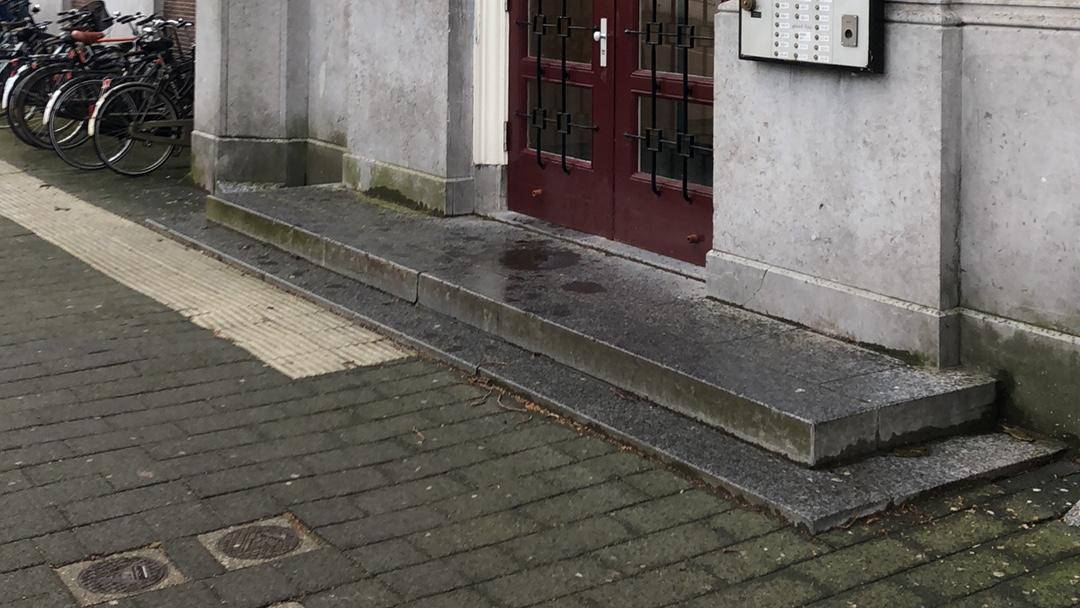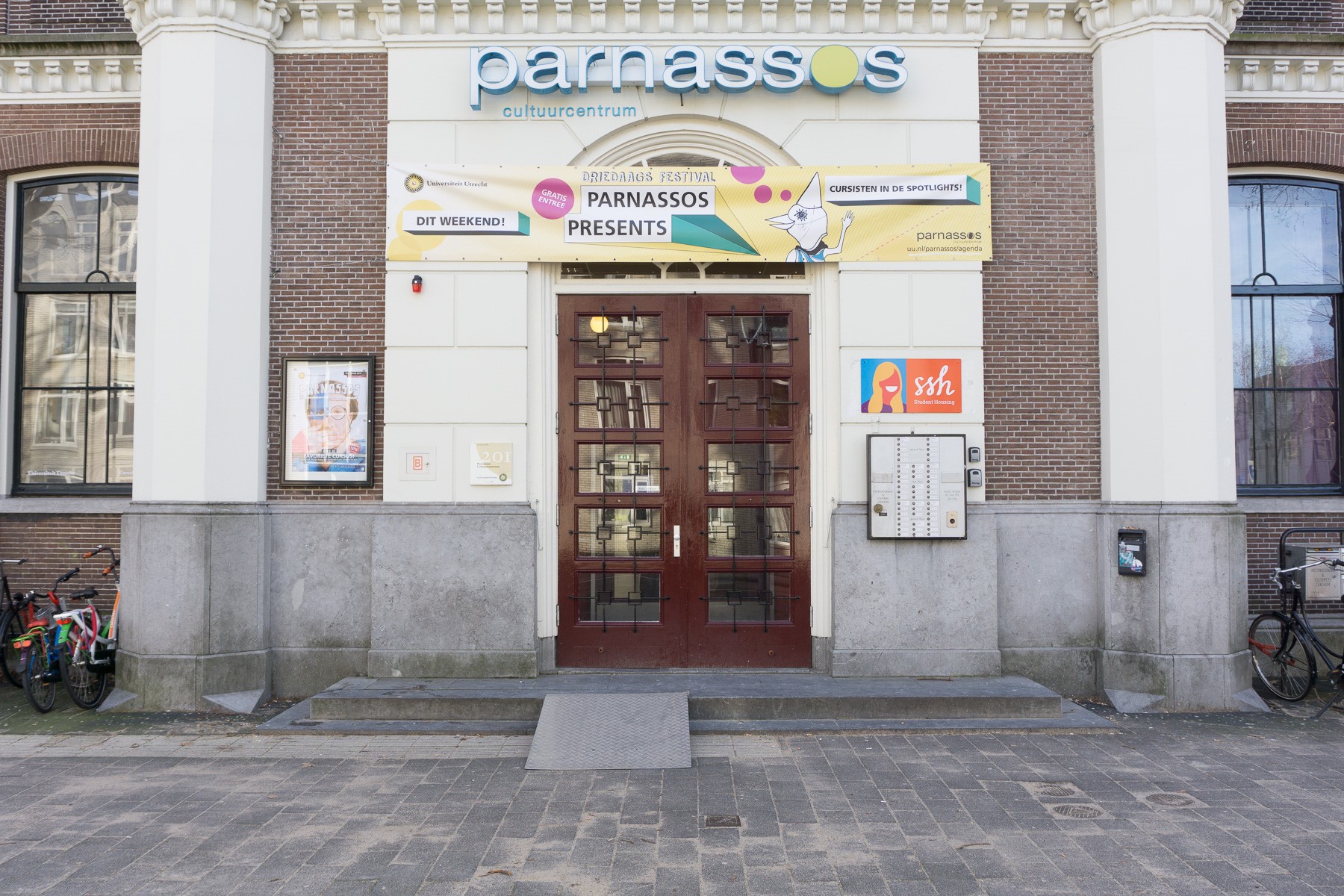Over half a million euros invested to make buildings more accessible in the city centre

The investments will finance minor improvements in 17 buildings, including those at Drift, Trans and Janskerkhof, which are mostly used for educational activities. Some of the improvements planned are the automatization of doors and fire doors, removing doorsteps, and adding markings and signals.
The buildings that will need the most work are the University Library and the one hosting Public Administration and Organisational Science, located on Bijlhouwerstraat, in particular. Both buildings have received a budget of 300,000 euros for the renovations. The library, for example, will need to automatise the heavy doors leading to its inner square. Larger adaptations, such as installing lifts, are not going to be paid for with this budget, but rather incorporated in the renovation works that have already been planned, such as the one scheduled for the new educational cluster on Achter de Dom and the renewed Law buildings on Achter St. Pieter.
Accessibility approach
This isn't the first time UU tackles the accessibility of its buildings in the city centre. Several years ago, partly due to complaints from disabled students, UU started paying more attention to accessibility (article in Dutch only), as well as the amenities needed by this group. A DUB article about a student who had so many problems in that regard that they contributed to her quitting her studies provided the university with extra motivation to make a change.
In 2018, together with other universities, UU signed a letter of intent with regards to the accessibility of higher education. UU's Equality, Diversity & Inclusion programme has been dedicated to improving the accessibility of UU's education and work environment, as the university has committed to being inclusive to this group of students.
When renovating its buildings or building new ones, UU now not only takes into account international accessibility standards and the university's specific neesa (such as special exam facilities), but it also considers the input of the building’s visitors.
To gain insight about the limitations that disabled students and employees experience in its buildings, UU held conversations with experts and used the information collected by user tests conducted in fifty buildings in the city centre and the Utrecht Science Park by the Studying Without Limitations Platform in 2019 and 2021.
student members of the Unlimited Studying Platform executed user tests in fifty buildings in the city center as well as the Science Park during 2019 and 2021.
The university has also published a document online with an overview of all the university buildings and their facilities, so that students and employees know what they can expect.
Apart from this structural approach to improve accessibility, project manager Jan-Willem Moerkerk says new demands will be met as well. “For example, if new students or colleagues have specific needs due to their physical disability, we want to talk to them and try to reach a solution.”
Additional investments
Indeed, accessibility issues have already led to adjustments in the buildings these past few years: some of the recent improvements include the entrance to the Wiedgegebouw building, the building on Janskerkhof 3, and the Academy Building. Designated places for wheelchair users have been added to the lecture halls of the Ruppert building and the building on Bolognalaan. In the Minnaert, Koningsberger and Buys Ballot buildings there have been improvements too, ranging from the adjustment of floors to the use of different toilet roll holders.
So far, these works have been paid out of the maintenance budget, but in the city centre, where many of the buildings have acquired a monument status, the situation is more complex. That's why the additional investments, which the Executive Board agreed to in November, are necessary. They stated that in a letter send to the University Council last year.
The renovation works are going to be conducted over the next year and a half. After that, the international campus will most likely be next on the list. The Utrecht Science Park also needs a lot of improvements, for which additional funds need to be allocated.
Article continues below the pictures.
Before:
 After:
After:
Well on track
According to project manager Jan-Willem Moerkerk, UU has made many strides these past few years, and its approach sets it apart from other Dutch universities. He guarantees that most buildings used for education will be accessible, with appropriate entrances and lifts – however, some obstacles will remain. “Not everything is happening as fast as we would like it to. We still have a lot of work to do.”
Moreover, Moerkerk stresses that accessibility goes way beyond making the buildings more accessible for wheelchair users. “The design of these buildings should also take people with a visual or cognitive impairment into account.”
Besides, circumstances may change for students and employees, which may result in new difficulties. "For example, someone who has their own workspace may not get one in the new situation, which may also be experienced as burdensome."
The project manager thinks the university has improved the way it treats the students and employees with specific needs. “But it could improve even more. How flexible can you be when individual students or employees come to you requesting something? We should aspire to respond to these wishes as soon as possible.”
New national platform Accessible Academia has reacted to UU's renovation plans through PhD candidate Maranke Wieringa, who stated that the organisation is "very happy with the attention and monetary commitment to improving accessibility”. Still, Wieringa has a few reservations about the letter sent to the University Council.
In their view, the university could have been more ambitious. “Other universities use a system in which permission to enter lifts and doors can be loaded onto campus or student identification cards. Such as system would be great for the platform lift at Drift 25 and the back entrance of Janskerkhof 2-3. One would no longer need the porter for assistance.”
Wieringa also says that the letter paints too pretty a picture of the possibilities to schedule lecture halls if other solutions cannot be found. The PhD candidate speaks from their* own experience as a part-time wheelchair user: “Currently, there is no all-encompassing system for schedulers to plan classes, in which one can see all the information about the facilities and needs of students and employees. If a course is scheduled by a different person, it means I have to repeat my explanations of what is and is not accessible all over again.”
Although Wieringa appreciates the survey conducted by the Studying Without Limitations Platform, considering that it provides a good basis for the new adjustments, the assessment does not reflect the needs of certain groups. Some os the teacher’s experiences, for example, are not being taken into consideration. “They have only examined if someone is able to enter a room, not whether they can reach the blackboard.”
Although that last complaint has been passed on, it’s not clear to Wieringa whether it has been incorporated in the new plan. According to Moerkerk, most of these complains concern the relatively cramped spaces in the buildings in the city centre. Due to Wieringa’s comments, an overview of these spaces has been prepared for the schedulers, so that they can take accessibility into account. Adjustments to alleviate that issue are not part of the new plan.